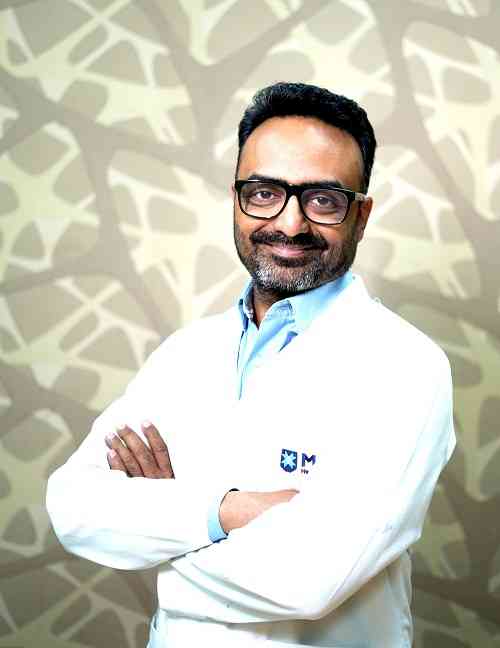Rising risk of cervical cancer in adolescents and younger women
Cancer cervix has been culprit for large number of deaths in women

Contributed by Dr. Shyam Kishore Shrivastava, Director- Radiation Oncology, HCG Cancer Centre Mumbai
Cancer cervix has been culprit for large number of deaths in women. The incidence of cancer cervix is high in several parts of the world especially in low- & middle-income countries. In several countries the incidence is receding, however it is still a major health concern. Prof Zur Hausen (German virologist) showed a strong association of HPV (Human Papilloma Virus) infection and the cancer cervix. The HPV is considered as a sexually transmitted virus.
Globally Cervical and Breast cancer are frequently diagnosed cancers and leading cause of deaths among women. These are also most common in Indian women and contributes approximately 40 % of all cancers in India in 2020. The age adjusted rate (AAR) for cervical cancer is high in northern region followed by Bengaluru and Barshi rural area in Maharashtra, ranges close to 28 per 100,000 population. There has been sharp increase of Cervical cancer rates in the age over 25 years in all Population Based Cancer Registries (PBCR) in India from 1985 and later declined. It has been noticed that in younger population the cervical cancer is either static or increasing. In England, cervical cancer is more common under the age 35 years and in this population the cervical screening program has been very effective in diagnosing early disease.
The cervical cancer is associated with lower socio-economic status and HPV prevalence. Also, early age of first intercourse, multiparity and tobacco consumption increases the risk of cervical cancer. The studies have indicated the implication for cervical screening and HPV vaccination and other public health intervention such as health education and tobacco control, needed to target the young people. The ICMR recommends cervical screening between 30 and 59 years and WHO recommends HPV DNA detection in screen and treat approach for women starting at age 30 years with regular screening every 5 to 10 years.
Early diagnosis of cervical cancer is key in controlling and curing the cancer. Cervical cancer is highly curable disease. The disease is amenable for radical surgery especially in early stages. The radiation therapy with combination of external beam radiation therapy (EBRT) and brachytherapy provide equal results in early stages and is treatment of choice in late stages. Several recent studies proved the use of concurrent chemotherapy with radiation therapy improves the control rates.
In early stages fertility preserving surgery (trachelectomy) has an option provided the disease is limited. Those women (especially young adults) wish to continue childbearing may consult Gynaecological Oncologist for needful. Patients with early disease, amenable for surgery should be operated by the experienced gynaecological oncologist to avoid further adjuvant treatment. The radical surgery (Wertheim’s surgery) provides excellent long-term outcomes in early disease.
Radical radiation therapy is very important modality of treatment for the cervical cancers. In majority of patients both EBRT and brachytherapy is mandatory. External beam radiation therapy covers all areas of disease including the lymph nodes which may be involved by the cancer. The rectum and urinary bladder cannot tolerate high doses of radiation and can give rise to debilitating complications. Therefore, EBRT is given up to the tolerance of these organs, however cervix can tolerate high dose and tumor will be sterilised with high dose of radiation. Therefore, the brachytherapy is given as an additional dose to tumor while limiting dose to sensitive organs.
Chemotherapy along with the radiation therapy has proven benefit in several studies. The schedule used is concurrent chemotherapy. These are generally single agent chemotherapy given prior to radiation therapy fraction may be once a week. These enhances the beneficial effect of radiation therapy. Occasionally, chemotherapy may be given after or prior to the definitive treatment.
There are few side effects of the treatment, and these are generally short lived, and patient’s quality of life is maintained well. Patients need to maintain nutritional status and may take help of dietitian. Once the treatment is concluded, it is important that patient should remain on follow-up with the treating doctor. During follow-up, if any side-effects are encountered, will be treated. A small percentage of patients where the recurrence may occur can be treated efficiently, if detected early, therefore regular follow-up is very important.
In certain circumstances, where the disease is not controlled, will require palliative care. The effects related to the advanced disease need to be treated symptomatically and, in many situations, morphine will be required. All these patients are treated on individual basis depending on the severity of symptoms.
In conclusion, awareness for the cervical cancer is essential for all especially for younger women. The screening for cervical cancer through simple test at a regular interval is useful in detecting in early stage and treat successfully. The vaccine is now available, and several countries are adopting with an aim to reduce burden of cervical cancer. The treatment of cervical cancer in early staged is curative in majority of patients.


 cityairnews
cityairnews 







